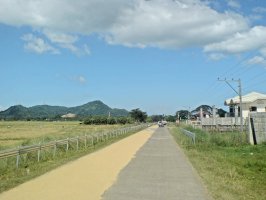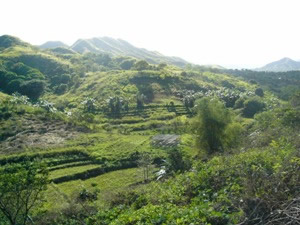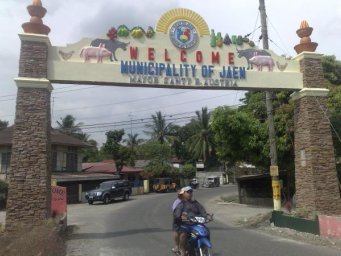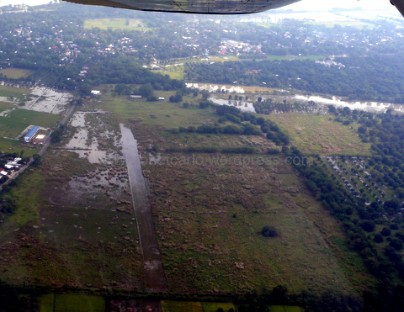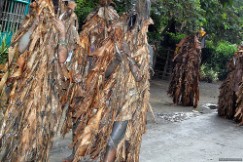Aliaga
The faithful of Bibiclat in Aliaga, Nueva Ecija wake up early to soak
their cloaks of dried banana leaves, camote vines etcetera and their
bodies in cold slimy mud. Then they march around and to the church
barefoot, a saintly procession of zombies and Taong Putik begging for
candles, and people willingly obliging them as atonements for their
sins.
| |
BONGABON
Bongabon is a 2nd class municipality
in the province
of Nueva Ecija,
Philippines. According
to the latest census,
it has a population of 73,639 people in 10,184 households in
28,352.90 hectares land area. It is the leading producer of
onion in the Philippines and
in Southeast Asia.
Each barangay
in
Bongabon has its own fiesta. The town fiesta, celebrated annually
on the 1st to 2nd week of April, is known as the Sibuyasan Onion
Festival.
| |
CUYAPO
1st class municipality in the province of Nueva Ecija, Philippines.
According to the latest census, it has a population of 55,456 people in
11,337 households.
General Tinio General Tinio is a 2nd class municipality in the province of Nueva
Ecija, Philippines. According to the latest census, it has a population
of 38,640 people in 6,878 households.
The town is at the foot of the Sierra Mountain Ridges adjoining the Fort
Magsaysay Army Reservation on the Eastside. The municipalities of San
Miguel, Bulacan, Pe�aranda and San Leonardo, Nueva Ecija abut the town
from its South, West and Northside.
Jaen
Jaen is a 3rd class municipality in the province of Nueva Ecija,
Philippines. According to the latest census, it has a population of
63,474 people in 11,472 households. Local celebrities Diether Ocampo and
Kristine Hermosa made a secret wedding here on July 14, 2004.
Licab Licab is a 5th class municipality in the province of Nueva Ecija,
Philippines. According to the latest census, it has a population of
23,675 people in 4,331 households.
About one hundred fifty five (155) kilometers from Metro Manila. Licab
lies in the lowest portion of the province, experiencing two situations:
during rainy seasons, being located at the northern portion of the
municipality are flood free barangays while the other five (5) barangays
are mostly underwater. 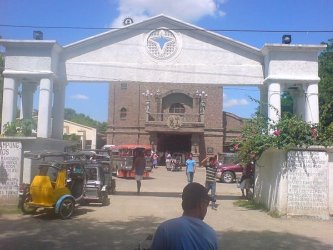
Llanera Llanera is a 4th class municipality in the province of Nueva Ecija,
Philippines. According to the latest census, it has a population of
33,493 people in 6,361 households.
The town's economy is largely agricultural, with rice as the principle
product. It is a land of plains with frew creeks a small dam and a river
the only water bodies bissecting the plains. There are no mountain
ranges in the municipality. Principal industry and commerce are related
to the production of rice and rice products. Minor products include
onion growing cattle raising and vegetable production.
The municipality is traversed by a national road leading to Aurora
province. The municipality is bounded by the city of San Jose, the
municipalities of Talavera, Rizal and Natividad.
Pantabangan Pantabangan is a 4th class municipality in the province of Nueva Ecija,
Philippines. According to the latest census, it has a population of
25,520 people in 4,808 households. This is the site of the Pantabangan
dam.
Pe�aranda Pe�aranda is a 4th class municipality in the province of Nueva Ecija,
Philippines. According to the latest census, it has a population of
26,725 people in 4,940 households.
It is bordered by municipalities of General Tinio and San Leonardo and
the city of Gapan.
The area was originally called Mapisong, and it was a part of the
municipality of Gapan. The area was organized into a municipality by
Jos� Maria Pe�aranda, a Spanish engineer, and subsequently named after
him.
Pe�aranda was once known for its high quality crop called ikmo, a plant
used by older Filipinos as a chewing substance. Recently however, the
crop is on the brink of extinction. Rice remains a flourishing farm
produce.
Every May, Pe�aranda residents stage a musical drama called "Araquio", a
re-enactment of Christians' quest led by Queen Helena and King
Constantine for the Holy Cross where Jesus Christ was nailed. Actors and
actresses garbed in colorful and cute costumes dramatize this century
old tradition which features swordfights between the Christians and
Moors.
Pe�aranda is also known for its mouth-watering, native rice cakes such
as espasol, putong puti and sapin-sapin. 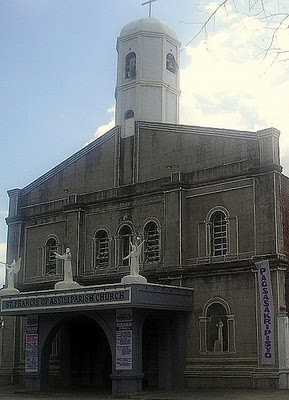 |
|
CARRANGLAN
2nd class municipality in the province of Nueva Ecija, Philippines.
According to the latest census, it has a population of 33,233 people in
6,603 households. It is the largest municipality in terms of land area. | |
GABALDON
Gabaldon (formerly Sabani and Bitulok) is a 4th class municipality in
the province of Nueva Ecija, Philippines. According to the latest
census, it has a population of 29,619 people in 6,038 households.
The town is tucked by the Sierra Madre Mountains. It lies 171 kilometers
northeast of Manila, the capital of the Philippines. Tagalogs
predominate this town. It is bounded by Bongabon on the north, Laur on
the west, General Tinio on the south, and Dingalan by the east. There is
only one road passing through this town. The road up to barangay
Sawmill is concreted but the remaining two barangay before Dingalan town
is not.
It was created by virtue of Republic Act 496 from its mother town of
Laur. Through Republic Act 1318, its name was changed from Sabani to
Gabaldon.
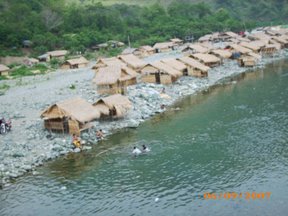
Guimba Guimba is a 1st class municipality in the province of Nueva Ecija,
Philippines. According to the latest census, it has a population of
96,116 people in 19,207 households. It was incorporated by the King of
Spain by virtue of a royal decree in 1897. 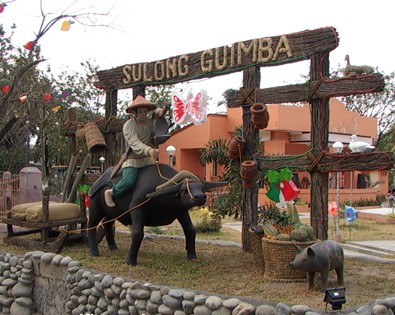
Laur The municipality of Laur is bounded by the town of Bongabon, Nueva Ecija
in the north, by City of Palayan in the south, by the Province of
Aurora in the east and by the town of General Mamerto Natividad, Nueva
Ecija in the west. It has a total land area of 295.5 sq. kilometers and
is consist of 17 barangays.
Based on the distribution of rainfall, the town of Laur has two distinct
season; wet and dry. It is wet during the months of May to November and
dry during the rest of the year. The heaviest rainfall comes during the
month of June to August, a considerable percentage of the climatic
disturbance hitting the country affect the area.
Integrating both temperature and rainfall as criterion, the climate can
be divided into two; temperate to hot during dry season and semi humid
during wet season.
Generally, Laur has a slope ranging from 0% to 3% and almost all of the
entire area is cultivated land and considered as one of the prime
agricultural area of the province of Nueva Ecija. 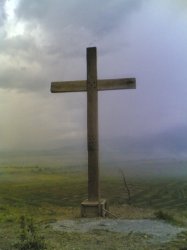
Lupao Lupao is a 4th class municipality in the province of Nueva Ecija,
Philippines. According to the latest census, it has a population of
36,832 people in 6,361 households.
The town is derived from the Ilocano word �lupa�, the name of an itchy
plant found in great abundance within the town and its outskirts at the
time of the town�s foundation in 1913. It is situated in Nueva Ecija,
Region 3, Philippines, its geographical coordinates are 15� 52' 37"
North, 120� 53' 57" East.
Nampicuan Nampicuan is a 5th class municipality in the province of Nueva Ecija,
Philippines. According to the latest census, it has a population of
11,786 people in 2,227 households.
Quezon The municipality of Quezon is strategically located in the heart of
Nueva Ecija. it is bounded by the municipality of Talavera on the East,
by the municipality of Licab on the North, by the municiaplity of
Victoria, Tarlac on the West and by the municipality of Sto. Domingo on
the South.
Quezon is a 4th class municipality in the province of Nueva Ecija,
Philippines. According to the 2000 census, it has a population of 31,720
people in 6,389 households. |
